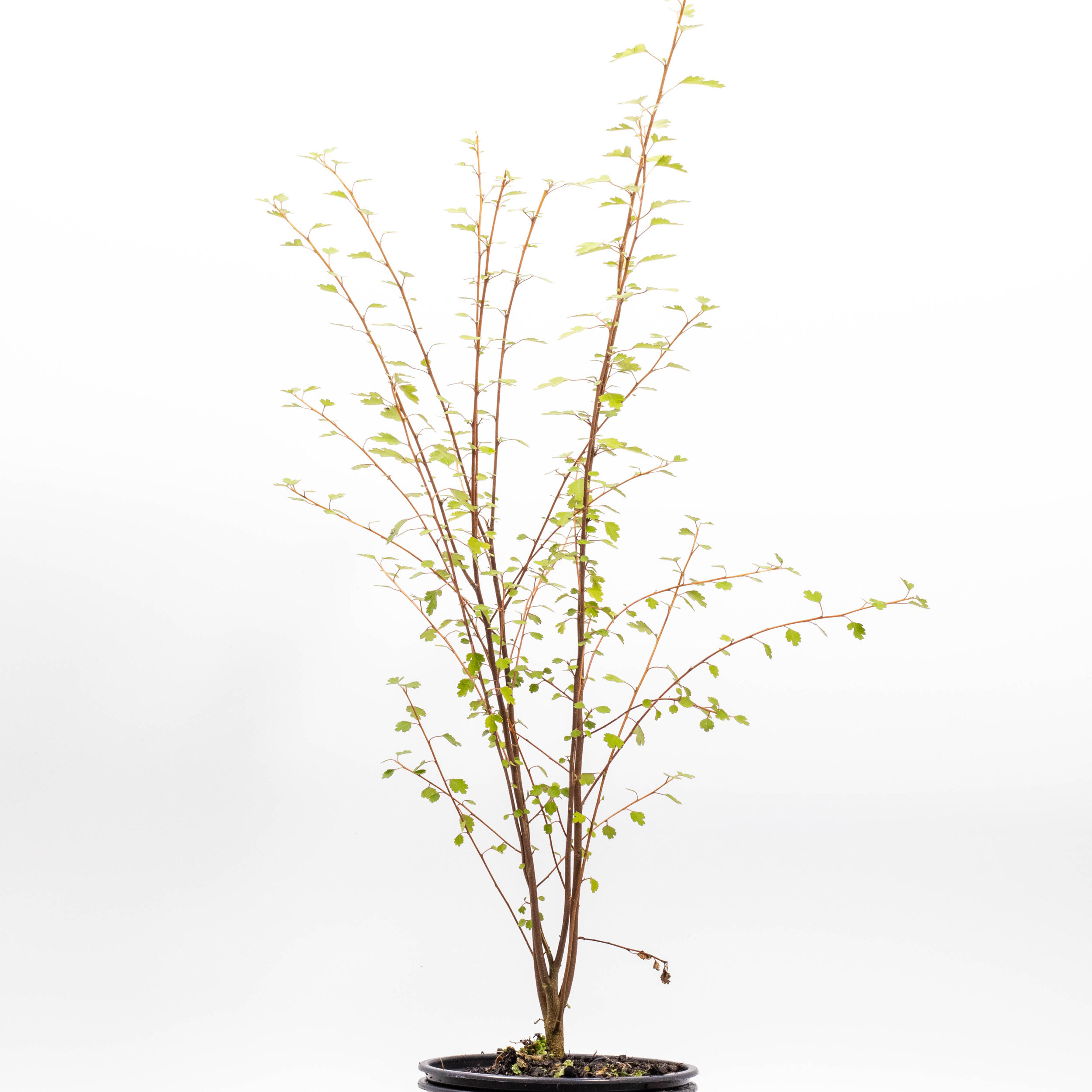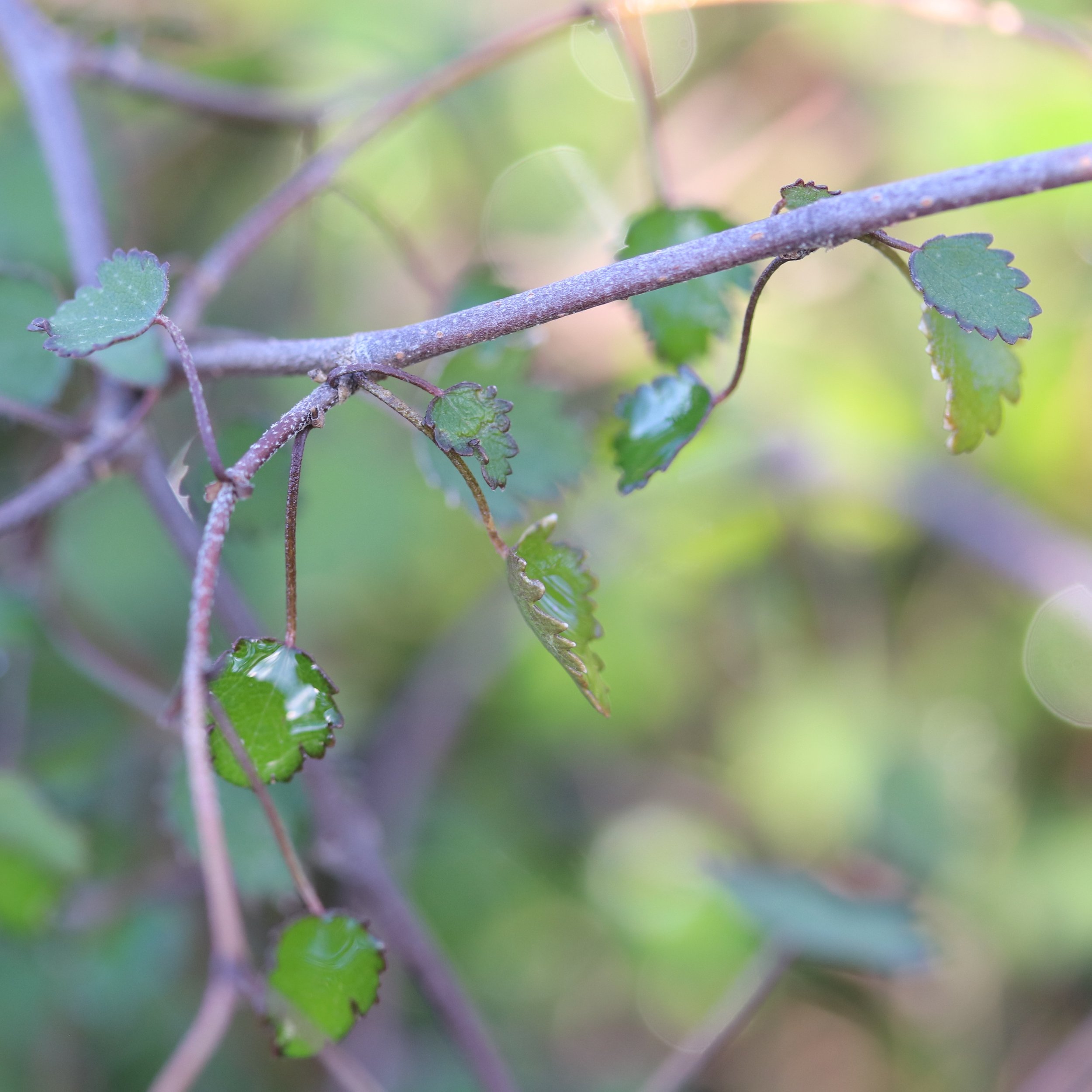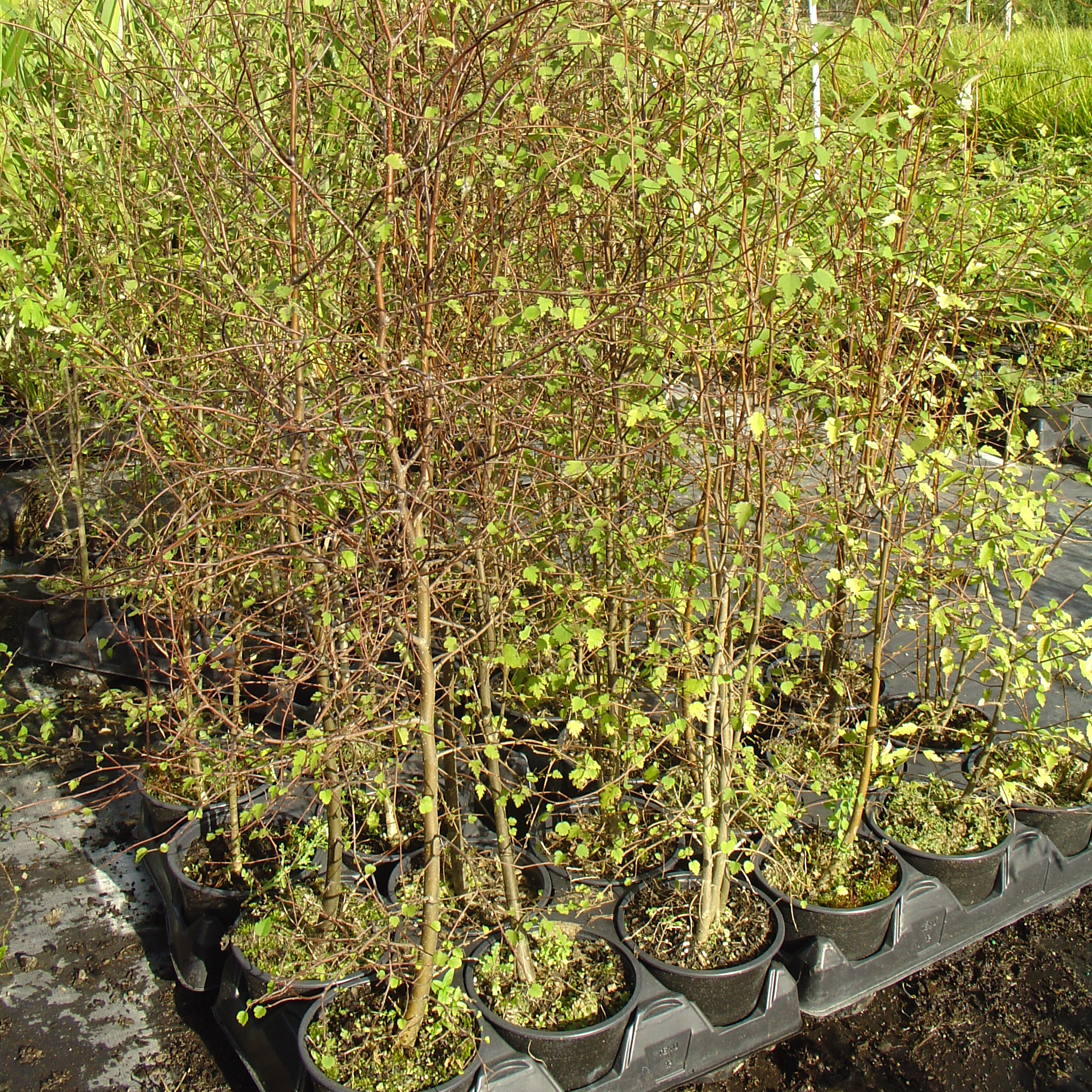Plagianthus regius
Manatu, ribbonwood, lowland ribbonwood
Plagianthus regius, commonly known as ribbonwood, is the largest of our deciduous trees growing 5 -10m. It is found in localised areas of lowland forest throughout New Zealand. The tree has a divaricating juvenile form with bright green rounded and toothed leaves. The adult becomes a straight trunked tree with larger elongated leaves. The juvenile form may persist at lower levels and can be pruned off if required.
The male and female flowers usually occur on separate trees and are yellowish green. They are just 3-4mm wide, with the male flowers being paler and slightly bigger, and are borne in dense drooping panicles from mid spring to summer. The tree has an attractive airy appearance, yet is quite tough, being able to withstand strong winds. Can be prone to borer. It will grow in most soils but does best in one that has been well worked.
<
Habitat:
–––––––––--
Suits temperate conditions.
Suits alpine conditions.
Sunlight:
–––––––––--
Prefers full sun.
Application:
–––––––––--
Use in hedgerow and shelter belt plantings.
Use in revegetation plantings.
Size:
–––––––––--
Mature: diameter 3m x height 8m
Planting centres: 1m
>
Manatu, ribbonwood, lowland ribbonwood
Plagianthus regius, commonly known as ribbonwood, is the largest of our deciduous trees growing 5 -10m. It is found in localised areas of lowland forest throughout New Zealand. The tree has a divaricating juvenile form with bright green rounded and toothed leaves. The adult becomes a straight trunked tree with larger elongated leaves. The juvenile form may persist at lower levels and can be pruned off if required.
The male and female flowers usually occur on separate trees and are yellowish green. They are just 3-4mm wide, with the male flowers being paler and slightly bigger, and are borne in dense drooping panicles from mid spring to summer. The tree has an attractive airy appearance, yet is quite tough, being able to withstand strong winds. Can be prone to borer. It will grow in most soils but does best in one that has been well worked.
<
Habitat:
–––––––––--
Suits temperate conditions.
Suits alpine conditions.
Sunlight:
–––––––––--
Prefers full sun.
Application:
–––––––––--
Use in hedgerow and shelter belt plantings.
Use in revegetation plantings.
Size:
–––––––––--
Mature: diameter 3m x height 8m
Planting centres: 1m
>
Manatu, ribbonwood, lowland ribbonwood
Plagianthus regius, commonly known as ribbonwood, is the largest of our deciduous trees growing 5 -10m. It is found in localised areas of lowland forest throughout New Zealand. The tree has a divaricating juvenile form with bright green rounded and toothed leaves. The adult becomes a straight trunked tree with larger elongated leaves. The juvenile form may persist at lower levels and can be pruned off if required.
The male and female flowers usually occur on separate trees and are yellowish green. They are just 3-4mm wide, with the male flowers being paler and slightly bigger, and are borne in dense drooping panicles from mid spring to summer. The tree has an attractive airy appearance, yet is quite tough, being able to withstand strong winds. Can be prone to borer. It will grow in most soils but does best in one that has been well worked.
<
Habitat:
–––––––––--
Suits temperate conditions.
Suits alpine conditions.
Sunlight:
–––––––––--
Prefers full sun.
Application:
–––––––––--
Use in hedgerow and shelter belt plantings.
Use in revegetation plantings.
Size:
–––––––––--
Mature: diameter 3m x height 8m
Planting centres: 1m
>






